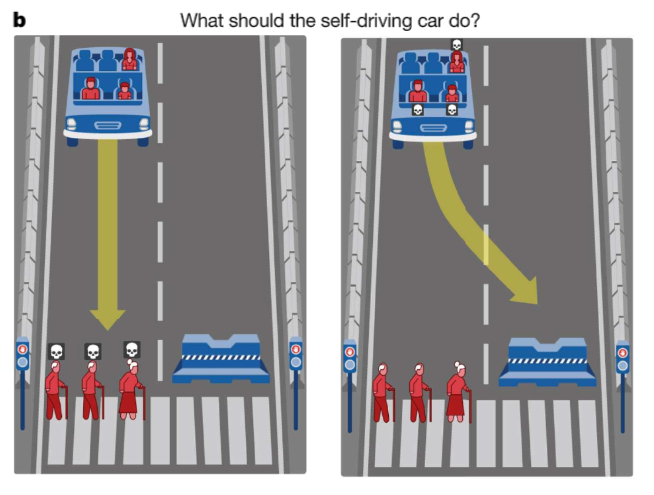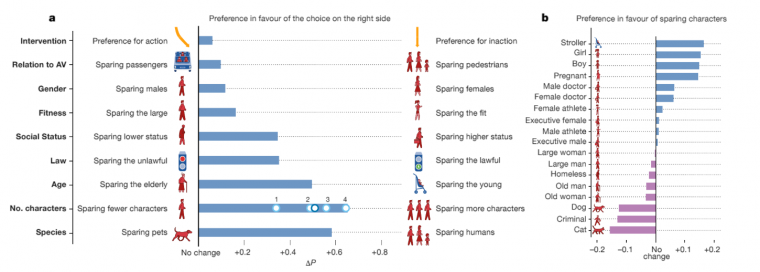Self-Driving Ethics Part One: What We All Agree On
Ethical questions have long been up in the air surrounding self-driving vehicles. Many of these surround situations like the “trolley problem,” and ask, “If a self-driving car has to choose to between two groups to live, then what should it do?” To answer that question, researchers from MIT, Harvard University, the University of British Columbia, and Universite Toulouse Capitole created an experiment they called the Moral Machine. People across the world could participate in the study through a short survey. Participants faced 13 different scenarios where the car has to choose who to spare and who to sacrifice, and pick which of the two scenarios would be better.
Taking Care: If you are maintaining an old car, take these tips into consideration

Photo: Nature
Each person’s results were shareable on social media. Then, after the quiz the researchers asked for demographic information, though it was completely optional to provide it. Finally, the information would be geo-localized using the user’s IP address. In all, the Moral Machine gathered 40 million decisions in 10 languages from 233 different countries and territories.

For graph “a,” all of the choices on the right of the lines were preferred, and the blue line is a measure of just how strongly people preferred it
Photo: Nature
The results show that in general, worldwide we agree on a few things. We generally want the car to spare humans over animals, spare more lives, and spare young lives. However, there were a total of nine attributes in the test: whether the vehicle moves or keeps going, relation of the vehicle to the spared people, gender, fitness, social status, whether the people were lawful, how many people were in danger, and species.
Think of the Students: Chevy is offering scholarships to students of Historically Black Colleges and Universities
In general, other than the top three preferences, around the world people preferred the car to spare people who aren’t jaywalking, who are of higher social status, who are more physically fit, who are women, and who are pedestrians. They generally didn’t have the car change course.
Researchers also broke the data into regions and found some interesting results. We discuss these results in the second part.
News Source: Nature (subscription required)

The News Wheel is a digital auto magazine providing readers with a fresh perspective on the latest car news. We’re located in the heart of America (Dayton, Ohio) and our goal is to deliver an entertaining and informative perspective on what’s trending in the automotive world. See more articles from The News Wheel.


